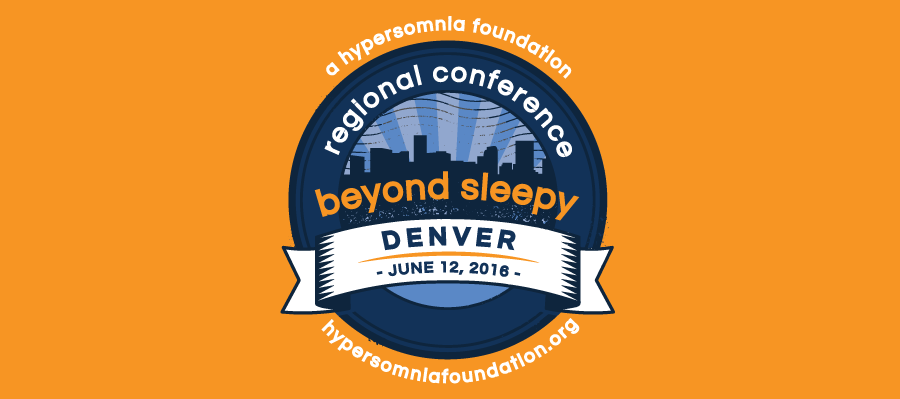SomnusNooze
Very recently, the Hypersomnia Foundation became aware of an opportunity to help shape the future of sleep research. The National Institutes of Health, the primary source of funding for medical research in the United States, has issued a Request for Information, which you can view at: https://grants.nih.gov/grants/guide/notice-files/NOT-HL-16-312.html.
The final date to submit your comments has been extended to today, May 16, 2016.
Last week, we sent an email to everyone in our database to encourage you to make your voices heard. We are urging you again to act today. Please share your hypersomnia story with the people who determine medical research priorities and allocate funds.
- Tell them why the currently available diagnostic tools and lack of awareness about hypersomnia led to a lengthy delay in your diagnosis.
- Tell them why research into the cause of and effective treatments for hypersomnia are so desperately needed.
- Tell them why we need a cure as soon as possible because hypersomnia is limiting your ability to achieve your dreams, complete your education, or even provide financially for your family.
Please join your voice with ours as we fight to secure the place of hypersomnia at the top of the nation’s sleep research agenda. The Hypersomnia Foundation Board of Directors has submitted the following response, and we encourage you to send your comments and suggestions to the NIH, as you deem appropriate, at .
to the National Institutes of Health’s Request for Information:
For nearly a century, the study of sleep and its function(s) in health and disease has been principally focused within approaches that center on not enough sleep. Although excessive daytime sleepiness (EDS), cognitive dissonance, and other symptoms not surprisingly result from sleep deprivation, central disorders of hypersomnolence (CDH; e.g., idiopathic hypersomnia, Kleine-Levin syndrome, narcolepsy type 1 [NT1], and narcolepsy type 2 [NT2]) in humans (in which EDS is often accompanied by extremes of sleep length) emerge spontaneously. Studying patients with CDH has already proven to be fertile ground for investigation, as evidenced by the discovery that loss of brain hypocretin causes narcolepsy with cataplexy (i.e., NT1). Yet, for the other CDH, there remains a large unmet clinical need, with further research and development prime for discovery and the potential for extraordinary translational opportunities.
Symptoms of CDH can be disabling, and because, for example in NT1, they also begin in adolescence or young adulthood, are chronic, sometimes progressive, go undiagnosed or misdiagnosed for decades, and respond variably to medications. Despite advances around NT1, the knowledge gained has not translated smoothly to the clinical realm. Diagnoses of CDH inclusive of NT1 since 1975 have relied upon a forty-year-old test (viz., the Multiple Sleep Latency Test [MSLT]) that is cost, time, and labor intensive and that was born of practical necessity and subsequently tweaked to specifically identify NT1. In 2006, two preeminent sleep researchers concluded that the MSLT yields “a large number of false-positives” and that an increased daytime propensity to REM-sleep—traditionally accepted to be the sole domain of NT1—does “not appear to have any specific pathognomonic significance.” Yet, in 2016, the MSLT remains the gold standard that drives diagnoses and all that it implies. For clinician scientists, this means, for example, how clinical trials are designed and studies of heritability are conducted. Even more so, for patients, this has enormous implications for prognosis, treatment choice, access to medication(s), and accommodations/disability status.
There are currently no FDA-approved treatments for the CDH—medication choice being limited to those for narcolepsy. Since the 1930s, conventional psychostimulants such as ephedrine have been used to treat NT1. The majority of the current pharmacological armamentarium and drug development are similarly designed and focused upon promoting wakefulness by enhancing brain monoamines. Drugs more directly designed to replace hypocretin continue in development 16 years after the discovery of hypocretin. An alternative construct in approaching the biology and treatment of CDH has recently been proposed that appears to hold great promise for many patients. People with CDH without NT1 (i.e., hypocretin being intact) do not appear to suffer from any “loss of function” per se but, rather, a gain of function in sleep-promoting brain circuits. Thus, pharmacologic agents that antagonize the sleep-promoting and consciousness-dampening neurotransmitter gamma–aminobutyric acid (GABA), such as flumazenil, clarithromycin, and pentylenetetrazol, have either been demonstrated to be effective or are in clinical trials for CDH patients in whom traditional wake-promoting agents have not been helpful.
We advocate for initiatives to fund discovery research that translates to improve the human condition of people with CDH in whom sleep is prolonged and ostensibly persists into “wake.” Enhanced recognition and improved treatments call for greater understanding of not only the clinical spectrum of CDH and the natural history of these disorders, but also mechanistic understanding of their biological underpinnings. Diagnostic tools that are highly discriminative and designed to capture more than just EDS and an increased daytime propensity to REM sleep are an absolute necessity. CDH remain diagnoses of exclusion such that greater understanding of potential mimics—which themselves would enhance mechanistic understanding of sleep—and biomarker discovery are also high priorities. As there are numerous stakeholders in such endeavors, as evidenced in the summary provided above, the absolute need to encourage greater dialogue and collaboration among patients, patient advocacy groups, professional organizations representing sleep physicians, funding agencies, and industry cannot be understated. With increasing dissemination of knowledge through many means, not the least of which includes social media, patient consumers with CDH-like symptoms have become increasingly knowledgeable. They are acutely aware that CDH outside the realm of NT1 is not well served by current medical knowledge or practice in this realm. Accepting the status quo risks alienating the public and medical consumer.
We would, therefore, propose including a sleep neurobiologist on the NHLBI Sleep Disorders Research Advisory Board and developing mechanisms for solicitation of program projects and set-aside funds specifically to research hypersomnia, with requests for proposals to prioritize filling unmet clinical needs in the following areas:
- R37 Javits Neuroscience Investigator Award
- NIH EUREKA grants
- R13 funding to support conferences
- T32 grants for postdoctoral study
- RFAs and more specifically RFPs
- SBRI funding for better diagnostic tools
Because the breadth of scientific inquiry or line of investigation needs incredible resources and sustainability, we would advocate for funding initiatives with set-aside monies at all levels of training, including predoctoral, doctoral, postdoctoral, junior investigator, and senior investigators, and we envision promoting set-aside monies for all the Career Development K Awards for investigators with projects relevant to CDH.

Learn about the latest hypersomnia research on June 12th at the Hypersomnia Foundation’s regional conference, Beyond Sleepy in the Mile High City. Scientists will share findings from their recently completed clinical trials and other ongoing studies, lead us on a journey through the drug discovery and approval process, and help us to cope with the daily struggles of hypersomnia. You will also learn how your future participation in the registry can help to solve the puzzle of hypersomnia.
Tickets are running out so order your $25 ticket online to join us in person in Denver or wait until June 1 to sign up for a live Internet stream of the conference, brought to you free of charge through the generous support of Balance Therapeutics, Inc., and Flamel Technologies, SA.
